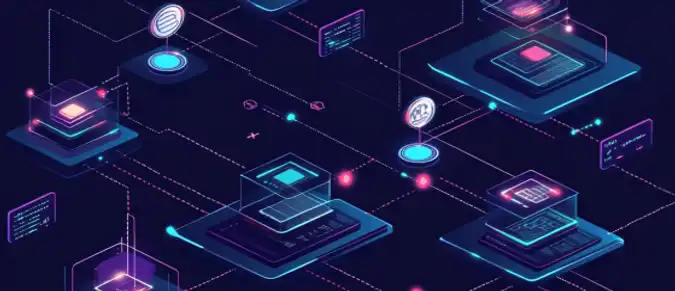With the advancement of blockchain technologies and the increasing number of blockchains available, developing decentralized applications (dApps) has become a more complex task. To address these challenges, multichain dApps have emerged, allowing developers to create applications that can operate on multiple blockchains simultaneously. In this article, we will explore what multichain dApps are, the advantages they offer, and how their development could reshape the decentralized technology landscape.
Table of Content:
- What Are Multichain dApps?
- Advantages of Multichain dApps
- Technical Aspects of Creating Multichain dApps
- Main Challenges and Solutions
- Conclusion

What Are Multichain dApps?
Multichain dApps are decentralized applications that can operate on multiple blockchains simultaneously. Traditional dApps are built for a specific blockchain, which limits their functionality and audience. In contrast, multichain dApps allow users to interact with various blockchains through a single application. This opens up new possibilities for integration, improves scalability, and enhances security.
Advantages of Multichain dApps
Multichain dApps offer several key advantages over traditional decentralized applications:
- Expanded Audience: An application available on multiple blockchains can attract more users from different ecosystems.
- Increased Resilience: Operating on multiple blockchains reduces dependency on a single blockchain and its potential issues.
- Enhanced Security: Multichain dApps can leverage the security benefits of each blockchain they operate on.
- Scalability: The ability to distribute the load across multiple blockchains can improve the dApp's performance.
Technical Aspects of Creating Multichain dApps
Creating multichain dApps requires advanced technical knowledge and the use of various tools and frameworks. Developers face the challenge of synchronizing data across blockchains, managing different types of tokens, and ensuring seamless integration with various smart contracts. One of the key aspects of developing such applications is choosing the right set of tools, such as cross-chain development frameworks, adapters for interacting with different blockchains, and systems for data management.
| Blockchain | Key Features | Example dApps |
|---|---|---|
| Ethereum | Robust, supports smart contracts | Uniswap, Compound |
| Binance Smart Chain | Fast transactions, low fees | PancakeSwap, Venus |
| Polkadot | Interoperability, scalability | Acala, Moonbeam |
| Solana | High speed, low transaction cost | Serum, Raydium |
Main Challenges and Solutions
Despite the advantages, developing multichain dApps comes with a number of challenges. One of the main challenges is the complexity of data synchronization and ensuring security across multiple blockchains. Developers also need to consider differences in blockchain architecture, consensus mechanisms, and transaction confirmation times. To overcome these difficulties, developers can use cross-chain bridges, orchestration systems, and smart contracts that can operate on multiple blockchains.
Conclusion
Multichain dApps represent a new stage in the evolution of decentralized technologies, offering opportunities to create more powerful and flexible applications. They provide access to various blockchains, increasing their audience, improving security, and enhancing scalability. However, developing such applications requires considering numerous technical aspects and overcoming significant challenges. In the future, multichain dApps could become the foundation for a new generation of decentralized applications capable of meeting the needs of the most demanding users.




